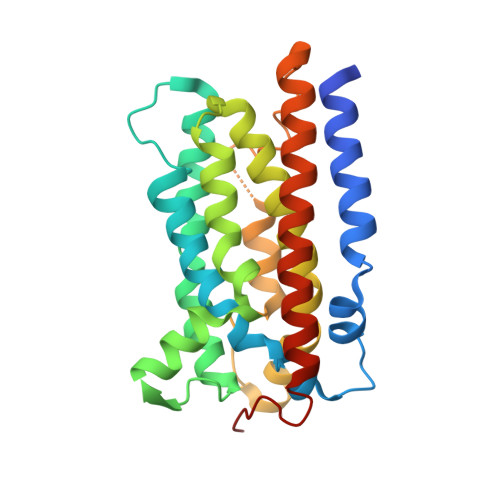Structural and molecular insights of two unique enzymes involved in the biosynthesis of a natural halogenated nitrile.
Chen, C.C., Li, H., Huang, J.W., Guo, R.T.(2024) FEBS J
- PubMed: 39308083
- DOI: https://doi.org/10.1111/febs.17279
- Primary Citation of Related Structures:
8ZVG, 8ZVH - PubMed Abstract:
Organohalogen compounds exhibit wide-ranging bioactivities and potential applications. Understanding natural biosynthetic pathways and improving the production of halogenated compounds has garnered significant attention. Recently, the biosynthetic pathway of a cyanobacterial neurotoxin, aetokthonotoxin, was reported. It contains two unique enzymes: a single-component flavin-dependent halogenase AetF and a new type of nitril synthase AetD. The crystal structures of these enzymes in complex with their cofactors and substrates that were recently reported will be presented here. The AetF structures reveal a tri-domain architecture, the transfer direction of the hydride ion, a possible path to deliver the hypohalous acid, and the unusual bispecific substrate-recognition mode. The AetD structures demonstrate that the nitrile formation should occur through the action of a diiron cluster, implying that the enzyme should be capable of catalyzing the nitrile formation of alternative amino acids. This information is of central importance for understanding the mechanism of action as well as the applications of these two the-first-of-its-kind enzymes.
Organizational Affiliation:
Zhejiang Key Laboratory of Medical Epigenetics, Department of Immunology and Pathogen Biology, School of Basic Medical Sciences, Hangzhou Normal University, Hangzhou, China.

















